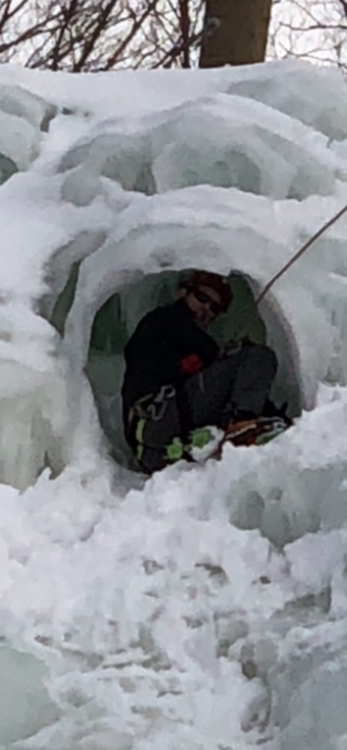Josh Wharton & Vince Anderson bivying under ice roof on the Italian route to the summit of Jirishanca
|
|
https://www.youtube.com/watch?v=rzlLT-je9jg @ 24:35 Is that not insanely dangerous? Camping under what is essentially a serac? What am I not understanding here |
|
|
It's not tennis. |
|
|
Isn’t climbing that entire Mountian dangerous?!? ;) |
|
|
Yes, insanely dangerous seems a reasonable description. Like they mention in the film, it's a really unique formation. More like a hanging snow field. A serac, I think, falls off of a glacier so it's not technically a serac. I'm assuming they made the decision to use it as a bivy based on a lot of observation of the stability. Has to be one of the most epic bivies I can recall seeing. And truly radical climbing. How often does an alpinist want fruit boots and oxygen on the same day???! Hyperbole of course. But still rad. Does anyone have examples of similar formations (full on ice roof on a proud face/ridge)? |
|
|
They bivied under a hanging glacier. Not an unreasonable decision because if something falls from above it will go overhead. Been there, done that on Denali. Snugged the tent right close to the wall, sometime latter the slope above cut loose and the debris went overhead. For the most part. A few minutes of terror followed by knowing the slope above was now climbable. Pretty wild climbing on the upper slopes. |
|
|
Allen Sanderson wrote: That makes sense in terms on the snow on the uppers. Isn't the typical risk of seracs the ice coming off in chunks though? |
|
|
Andy Shoemaker wrote: here is a nice safe ice bivy cave. Can’t quite remember where. Somewhere in the high Himalaya…..or maybe Michigan :) |
|
|
Jakob Trock-Jansen wrote: Indeed it is. They took a gamble. Lucky this time but it could have been very different with a sudden temp. rise, not uncommon in a country facing a massive ocean on one side and a huge jungle on the other. Do the Metereology math. "Global warming is melting glaciers, making avalanches and ice wall collapses increasingly common." |
|
|
Jakob Trock-Jansen wrote: Yes, it is a calculated risk. Protection from what is well above (regular but minor) vs right above (infrequent but catastrophic). It is also a matter timing too. Arriving late in the day a needing to bivy vs mid day and going up. |
|
|
Jakob Trock-Jansen wrote: Seracs might vary a lot in how active they are, depending on the nature of the glacier they are part of. A long glacier that moves quickly downhill will push seracs off more often and can be quite dangerous. A smaller glacial remnant like the one in the video may be a lot less active. For example, the Franz Josef glacier in NZ supposedly moves 2-11 meters PER DAY! As a result, the activity level is pretty high. That little remnant in the video certainly isn't moving that fast (or it would be gone in a week). I am not claiming that I can fully assess how a serac is going to behave, especially just from a video, but I think it's worth mentioning that they aren't all the same and the level of risk of being under one probably varies a lot. Given the amount of experience between those two guys, I think we can have some faith they considered the pros and cons. |

 Continue with onX Maps
Continue with onX Maps Sign in with Facebook
Sign in with Facebook





















